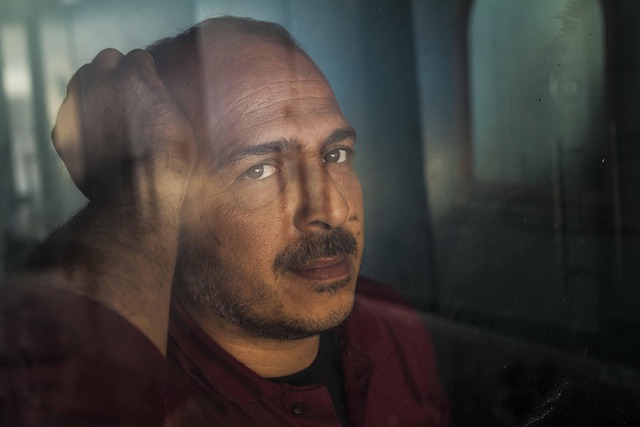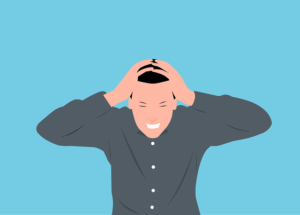Anxiety treatment for specific phobias involves addressing deep-seated fears through understanding their genetic, environmental, and learning origins. Cognitive Behavioral Therapy (CBT) identifies and changes negative thought patterns related to phobias, empowering individuals to manage and overcome their fears over time. Exposure therapy systematically exposes patients to their fears in controlled environments, helping them learn to reduce anxiety responses. Mindfulness and meditation train attention to the present moment, regulating nervous system activity and reducing physical symptoms of anxiety. Pharmacotherapy using SSRIs or benzodiazepines targets key neurotransmitters for acute symptom relief, while holistic approaches like mindfulness meditation, yoga, and acupuncture address symptoms and underlying causes. Peer support groups provide emotional validation and practical advice, enhancing therapy outcomes. Case studies demonstrate successful recovery journeys through personalized therapeutic approaches, including CBT, exposure therapy, and mindfulness. Long-term management strategies involve regular check-ins with therapists, healthy coping mechanisms, and building a supportive network for sustained well-being.
Phobia-Specific Anxiety Treatments: Navigating the Path to Calm
Anxiety related to specific phobias can significantly impact daily life, but effective treatments are available. This comprehensive guide explores diverse strategies to overcome these intense fears. From cognitive behavioral therapy’s (CBT) targeted approach to exposure therapy’s immersive technique, each method offers a unique path to recovery. We delve into mindfulness practices, the role of medication, alternative therapies, and the power of support groups, providing a holistic view of anxiety treatment tailored to phobias.
Understanding Phobia-Specific Anxiety: Unveiling the Root Causes

Phobia-specific anxiety treatments are tailored to address deep-seated fears and the underlying causes of severe anxiety. Understanding the roots of phobic anxiety is crucial for effective treatment. Many phobias develop from a combination of genetic predisposition, environmental factors, and learning. Traumatic experiences, such as a frightening event or relentless conditioning, can sensitize individuals to specific triggers, leading to excessive and persistent fear responses.
This conditioning process, often observed in childhood, reinforces the association between neutral stimuli and danger. Over time, even subtle reminders of the phobia can evoke intense anxiety. Cognitive behavioral therapy (CBT) is a prominent approach in phobia-specific anxiety treatment. CBT helps individuals identify and challenge distorted thinking patterns related to their fear, gradually exposing them to the trigger in a safe and controlled manner. By modifying these thoughts and behaviors, CBT empowers people to manage and overcome their phobias, leading to significant improvements in their overall well-being and quality of life.
Cognitive Behavioral Therapy (CBT): A Powerful Tool for Overcoming Phobias

Cognitive Behavioral Therapy (CBT) is a highly effective approach for managing and overcoming specific phobias, making it a cornerstone in the arsenal of anxiety treatments. This therapy type focuses on identifying and changing negative thought patterns that contribute to fear and anxiety responses. By challenging these distorted thoughts, CBT empowers individuals to reframe their perceptions, leading to reduced anxiety symptoms over time.
The process involves collaboration between the therapist and client, where they work together to understand the roots of the phobia. Through structured sessions, clients learn coping strategies and gain insights into how their thoughts and behaviors influence their emotional responses. This evidence-based therapy is known for its durability, often providing long-lasting relief from phobic anxiety, enabling individuals to lead more fulfilling lives.
Exposure Therapy: Facing Fear Head-On

Exposure therapy is a powerful tool in the arsenal of anxiety treatments, particularly for specific phobias. This therapeutic approach involves gradually exposing individuals to their feared stimuli in a controlled and safe environment. By facing their fears head-on, patients learn to manage and reduce their anxiety responses over time.
The process begins with identifying the triggering situation or object and then carefully creating a series of steps that increase exposure. For example, someone with arachphobia (spider phobia) might start by viewing pictures of spiders, then move on to watching videos, interacting with fake spiders, and eventually facing real spiders in a controlled setting. This systematic desensitization allows individuals to confront their fears directly, helping them realize that the feared outcome is unlikely and that they have the tools to cope.
Mindfulness and Meditation: Calming the Anxious Mind

Mindfulness and meditation have emerged as powerful tools in the arsenal of anxiety treatments. This practice involves training your attention and awareness to the present moment, observing thoughts and feelings without judgment. By cultivating mindfulness, individuals can learn to recognize when their minds are wandering into anxious rants or catastrophic thinking, allowing them to gently bring their focus back to the here and now.
Meditation techniques such as focused breathing and body scans help to regulate the nervous system, reducing the physical symptoms of anxiety like a racing heart and shallow breaths. Regular mindfulness meditation can rewire brain circuits involved in fear processing, fostering a greater sense of calm and resilience against anxious episodes. This approach encourages acceptance rather than avoidance, empowering individuals to face their fears with a clearer and more balanced perspective.
The Role of Pharmacotherapy in Managing Phobia-Related Anxiety

Pharmacotherapy plays a significant role in managing phobia-related anxiety, offering a valuable tool for healthcare professionals. Medications like selective serotonin reuptake inhibitors (SSRIs) and benzodiazepines are commonly prescribed to alleviate symptoms of anxiety disorders, including specific phobias. These drugs work by influencing neurotransmitters in the brain, such as serotonin and GABA, which are key players in regulating mood and reducing stress responses.
The use of pharmacotherapy is often a considered approach after other treatments have been explored. It can help individuals manage acute anxiety symptoms and improve their overall quality of life. However, it’s important to note that medication should be part of a comprehensive treatment plan, often combined with psychotherapy, to address the underlying causes of phobia-related anxiety and promote long-term recovery.
Alternative Therapies: Exploring Holistic Approaches

In addition to conventional therapies, exploring alternative, holistic approaches can offer effective anxiety treatments for those dealing with specific phobias. Practices like mindfulness meditation, yoga, and acupuncture have gained recognition for their ability to reduce anxiety symptoms. These methods focus on cultivating inner calm, promoting relaxation, and fostering a sense of control, which are crucial aspects in managing phobia-related anxiety.
By integrating these alternative therapies into comprehensive treatment plans, individuals can experience enhanced well-being. Holistic approaches consider the mind-body connection, addressing not just the symptoms but also the underlying causes of anxiety. This personalized approach encourages self-care and empowers individuals to take an active role in their mental health journey, complementing traditional therapeutic interventions.
Building Support Systems: The Power of Peer Connection

Building support systems is a crucial aspect of phobia-specific anxiety treatments. Connecting with peers who share similar experiences can provide a sense of belonging and understanding, which are vital for managing anxiety. Support groups offer a safe space to discuss challenges, exchange coping strategies, and celebrate progress. These connections can enhance the effectiveness of therapy by offering emotional validation, encouragement, and practical advice.
Peer connection goes beyond mere support; it fosters a sense of community that encourages resilience. Members learn from one another’s experiences, gaining insights into navigating their phobias. This collective knowledge enriches individual journeys towards anxiety treatment, promoting self-acceptance and empowerment. Such interactions can significantly impact the overall success and sustainability of managing phobia-related anxiety.
Case Studies: Real-Life Success Stories of Phobia Overcoming

In the realm of anxiety treatment, case studies serve as powerful tools, offering tangible evidence of successful phobia overcoming journeys. These real-life success stories provide hope and inspiration for those grappling with various phobias, demonstrating that recovery is not just possible but achievable. Through a combination of therapeutic techniques, such as cognitive behavioral therapy (CBT), exposure therapy, and mindfulness practices, individuals have found effective solutions to manage and ultimately overcome their debilitating fears.
Many case studies highlight the transformative power of personalized treatment plans. For instance, some individuals with specific phobias, like arachnophobia (fear of spiders), have witnessed significant progress through gradual exposure to their feared object in a safe and controlled environment. Others have benefited from cognitive restructuring techniques, learning to challenge and replace negative thoughts associated with their phobia. These success stories underscore the effectiveness of tailored anxiety treatment in helping individuals reclaim their lives and overcome limitations imposed by their fears.
Long-Term Management and Maintenance Strategies for Continued Recovery

Long-term management and maintenance strategies are crucial components of continued recovery from phobia-specific anxiety. After initial therapy, individuals often require ongoing support to prevent relapse and maintain their progress. This may involve regular check-ins with a therapist or counselor, who can help monitor triggers and provide guidance during challenging situations. Cognitive behavioral therapy (CBT) techniques learned during treatment can be reinforced through these sessions, enabling individuals to better manage anxiety responses.
Additionally, establishing healthy coping mechanisms and stress management strategies is essential. Engaging in regular physical activity, mindfulness practices, and adequate sleep hygiene can significantly reduce anxiety levels over time. Building a supportive network of friends and family who understand the condition also plays a vital role. Continuous learning about one’s phobia and staying informed on effective anxiety treatment methods allows individuals to proactively manage their mental health, fostering long-term well-being.
